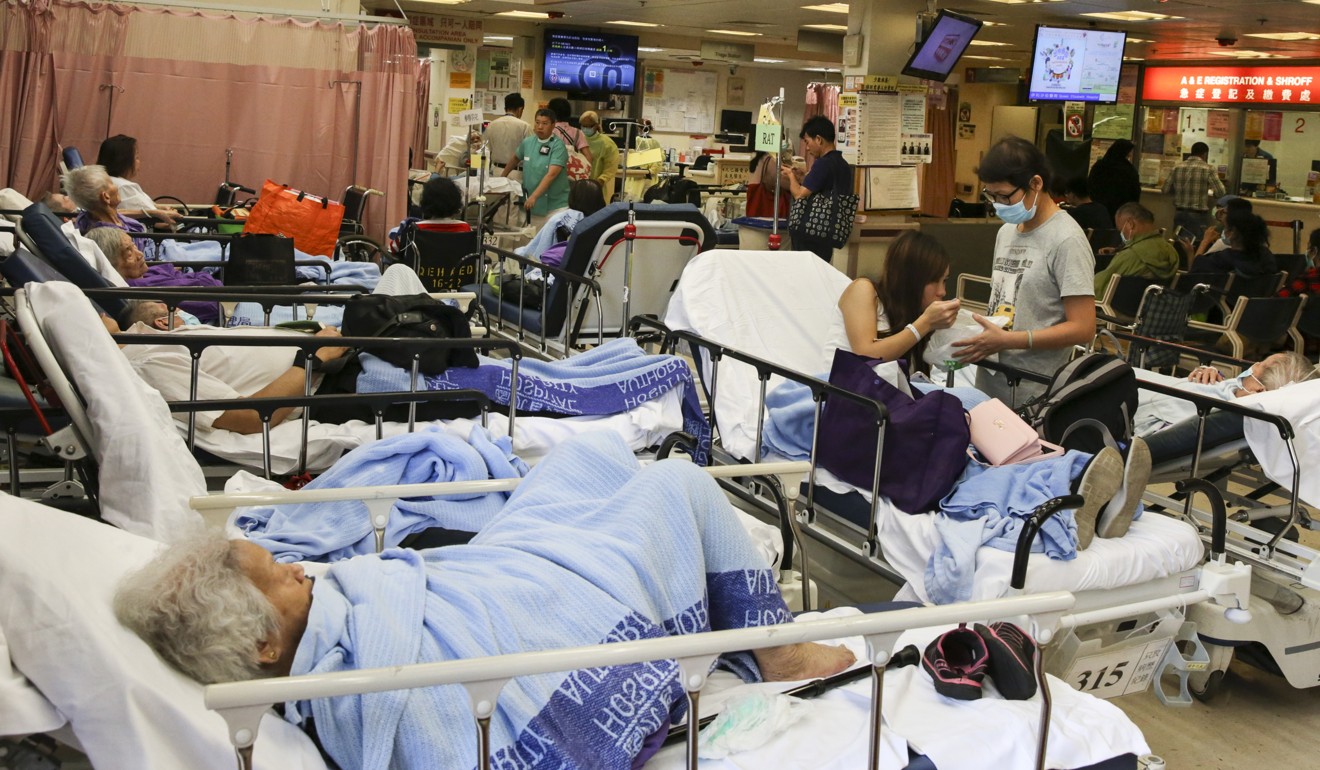
Hong Kong’s summer flu season ‘could last for three more weeks’
While the number of influenza cases in the city is falling, health expert expects more cases over the coming weeks
The summer flu season could last for three more weeks despite a recent drop in local flu activity, a public health expert has said.
Since May 5, some 474 adults and 19 children with influenza symptoms have developed serious complications – of them, 337 adults and three children have died.
The high number of cases has further strained the city’s already understaffed public hospitals, many of which have seen up to 120 per cent occupancy rates in medical wards across the city.
Secretary for Food and Health Sophia Chan Siu-chee said on Wednesday that the government was still working out details with the private Tsuen Wan Adventist Hospital on how it could use half its 60 cheaper beds to accommodate public patients.
The move came as the influenza activity and influenza-related admissions to public hospitals continued to decrease in the past two to three weeks after having peaked in mid-July, according to a spokesman for Centre for Health Protection on Wednesday.
The average daily number of severe cases among all age groups has gradually decreased to 7.9 per day between August 2 to 8, after having peaked at 11.3 per day between July 12 to 18, according to the centre.
“As observed in previous seasons, we expect that local influenza will still be active for some time as it normally takes about two to three months for influenza activity to return to baseline from the peak,” the spokesman said.

University of Hong Kong microbiologist Dr Ho Pak-Leung expected the peak to be past by late August or early September, with three more weeks to go given the current decreasing trend.
“We again advise members of the public and travellers to stay vigilant and calm and not panic as strict personal, hand and environmental hygiene remain the most effective means against influenza,” said the spokesman.
He said influenza is also active in the temperate southern hemisphere, parts of Southeast Asia, southern provinces in the mainland, Macau and Taiwan.
The death rate from the flu virus is as low as 0.1 per cent, with most infected healthy adults presenting with very mild symptoms such as sneezing, sore throat and fever. It can however trigger serious and fatal conditions among the high-risk population, such as the old, the young, and those with chronic illnesses.
In the winter peak of 2015, there were 647 adult cases recorded as serious, and 501 deaths. Last winter season in 2016, some adult 409 cases were recorded with 211 deaths.
The spokesman urged people with high-risk factors to receive vaccinations against seasonal influenza.

